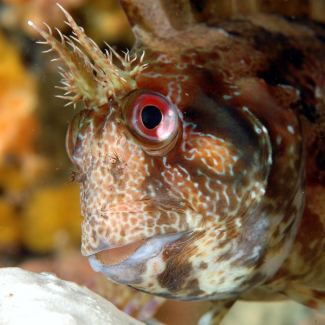
From green to orange, where does the diversity of cyanobacteria colours come from?
Cyanobacteria, which are often called blue algae, can actually adopt colours ranging from green to orange via pink, depending on the dominant photosynthetic pigment in the cells of particular species. Not all cyanobacteria, however, capture light in the same way: Prochlorococcus, for example, the most abundant cyanobacterium in the ocean, preferentially absorbs violet and blue wavelengths, while its cousin Synechococcus captures blue, green or both, depending on its pigment type. But how can this huge diversity of cyanobacterial pigments be explained? An international research team involving scientists from the Station Biologique de Roscoff (CNRS/Sorbonne Université) has just demonstrated the relevance of a long-held idea: the vibrations of water molecules. In fact, the scientists have shown that the bonds between atoms in water molecules are subject to vibrations that absorb certain light wavelengths, delimiting spectral niches, i.e. wavelength ranges that can be used by photosynthetic organisms. A new mathematical model, combined with satellite measurements, has confirmed that these vibrations divide the light spectrum into five niches: violet, blue, green, orange and red. Samples from the Tara Oceans expedition also demonstrated that the different pigment types of cyanobacteria are well distributed according to these niches: the cyanobacterium Prochlorococcus dominates in large central oceanic gyres, while Synechococcus predominates in coastal waters. These results, published in Nature Ecology and Evolution on the 9th November 2020, could improve forecasts on the evolution of aquatic ecosystems in the context of global climate change.


Vibrational modes of water predict spectral niches for photosynthesis in lakes and oceans. Holtrop T, Huisman J, Stomp M, Biersteker L, Aerts J, Grébert T, Partensky F, Garczarek L & Van der Woerd HJ. Nature Ecology and Evolution, November 9, 2020. DOI:10.1038/s41559-020-01330-x


